I had a garden once in southern California where I lived as a child. As I recall everything except the beans just grew, all we had to do was add water (well there was the one gigantic rock we dug up first). It was fun bringing in the fresh carrots from the soil, eating the lettuce and radishes straight out of the yard. It seemed so easy.
After that, I moved to the rest of the world, which meant I always lived somewhere that either had no yard space, or had pine trees, or was beyond my capabilities and means at the time.
Now, well the story of now is below, but let me just say at the outset, a couple of years older and wiser, that I think I’ve gone about it all pretty much ass-backwards. The halcyon memory of that little childhood patch in southern California, combined with our arrival in this house in the winter, when just about any dirt looks rich and brown (because it’s wet, idiot), led me to believe, or want to believe, that “if you plant them, they will grow.” Now I know better, but read on.
The house we live in now, and the house next door where our guests stay, both have long narrow gardens, each about 900 square feet or so. They are north facing and have high walls and some buildings and some (miserably unpruned poorly producing fig) trees around them, so sunlight seemed to be our biggest challenge. I don’t know what stood on the land within the last century or so, but I think there must have been some buildings, because there seems to be a lot of old mortar, pieces of bricks, etc. since the mosque out our front door was once a church/monastery complex that was built in the 1100s, I am always hoping some Byzantine relic will work its way up through the soil to meet my shovel…
2010 was our first here and I was determined to grow something. When we arrived during the early winter, the yards looked like this.
Among the weeds were a freshly dead seagull (I think a cat got it, amazingly, given how really big those birds are), and a very old ram’s head, still with all its (grinning) teeth and horns (not exactly like this, but not far off).
I paid a guy to weed, dig up old stumps, turn over the dirt, pull out the largest stones, and my electrician-amateur gardener (may god rest his soul, the cigarettes finally got the best of him) brought in some sheep manure along with a lot of lectures on whatever I was doing wrong.
In the guesthouse garden, on the first of the year in 2010, we planted five fruit trees – peach, apple, pomegranate, olive and apricot, in a row on the side that gets the most sun.
We also planted a lilac, a wisteria, two camellias and two rosemary bushes. The camellias and rosemary are stumps now, never to return, the olive got peacock leaf spot, but survived (more on that later). I also planted bulbs of daffodils, tulips, ranunculus, anemones, and star lilies, all of which did well, until I forgot they were there and planted clover over them in the fall (mark your plantings or make a map IMMEDIATELY!).
Still, for vegetables, I had some hesitations about planting directly in the soil. For one thing, I didn’t really know if the dirt was any good, and I was going to be away for six weeks and couldn’t monitor things; someone could come to water but that was it. For another, Istanbul is full of street cats, who keep the rodents at bay, but who also view any patch of bare ground as a litter box and I had no way of keeping them out of my yard, in spite of our tall concrete walls.
So I decided to build raised beds. To start, I made 10 boxes, each a meter square and about 30 cm. high. Then I had to fill them, and that’s where the fun started.
I read (that is, I spent hours online researching) about raised beds and most discouraged just dirt because of compaction, increased temperature, excess drainage, etc. I found out about square foot gardening and the mix Mel Bartholomew proposes, so I started looking for peat, vermiculite and compost. I visited a few local places and found only “torf” a type of local peat that I wasn’t sure about and also couldn’t afford in the volume I needed. I started looking online in Istanbul. I found a place called “smoothgarden” (there was “magicplant” too that looked like it was set up to grow cannabis but I think the guy just likes all the cool organic products from the Netherlands) that had vermiculite and some type of substrate. I ended up in a broken Turkish/broken English conversation with an agricultural engineer there who counseled me on a cocopeat/vermiculite/perlite mix.
But what about compost? You lucky people, who live where municipal compost, or spoiled hay, or any number of other soil amendments are available for free or very low cost, take a minute to realize how lucky you are! (attention, this is going to be a recurring theme). Even your trash is rich! There is one compost facility in Istanbul, run by the municipality as far as I can tell, the output of which is used entirely for the city’s landscaping needs.
There is no compost in Istanbul, unless you make it yourself, if you can, that is.
My engineer guy recommended I buy liquid organic fertilizers; he was afraid of sheep manure, that I couldn’t guarantee its quality (that it is what it purports to be). While I did use the manure on the open ground, I took his suggestion and ordered the fertilizers for the raised beds. They promptly arrived without any instructions on dosage or frequency. I made some best guesses and left instructions with the housekeeper who would come to water while I was away.
That of course was after I had mixed the cocopeat and vermiculite/perlite in the beds. The cocopeat came in compressed blocks that had to be hydrated, 3 per box – each 10 lb or so block was supposed to become 65 liters in volume. I had of course ordered these gaily without thinking how I was going to rehydrate 180 liters (over 40 gallons) for each box. That puzzled me for awhile – what was I going to soak these things in? I couldn’t afford ten garbage cans and they don’t even come that big here; I settled on garbage bags nestled in the raised bed frames, tied at the top, through which I inserted the hose to fill them with water. it worked, more or less, although I am sure it was only the start of my neighbors thinking I was crazy, racing between giant black water balloons to keep them upright long enough for the contents to soak up the water.
So what happened that first spring? Well, the trees survived, the flowers came up, along with wave upon wave of weeds, awakened by the soil being turned or having hitched a ride with the manure. The raised beds, well, in May when I returned, there was a nice crop of lettuce, about which I was thrilled!
The borage was in flower, the mustard was looking nice, and I think that was about it. The housekeeper and the electrician both had serious reservations about my cocopeat mix – it was too light, it floated up when she watered, what could it support? Still, little by little, once the warm weather kicked in, a tomato plant grew and spread, as did a crookneck squash, although both were late to flourish, most likely due to lack of nutrients.
As the summer wore on, the garden was crowded with life – however, it was mostly of the pest and pestilence order. The bug and disease wars began. Flea beetles ate holes in all the greens, weevils attacked the camellias, I found a few wireworms, lygus bugs fell in love with the sunflowers, aphids and whiteflies were general companions, earwigs and pillbugs abounded although they didn’t seem to be doing too much damage to the yard. Cabbage moths fluttered their white wings among the greenery, laying their caterpillar eggs. And the snails and slugs, oh the slugs….
I should be grateful perhaps for this frontal assault, because I started to spend a lot of (even more) time online, learning about beneficial insects and pests. I already knew about IPM (integrated pest management) from my work as an editor; now the UC Davis IPM website was going to become one of my favorite places, alas.
Of beneficial bugs, I saw almost none.
I found remedy upon remedy, and yet at every turn was thwarted:
- soil-dwellers like weevils and cutworms – use nematodes – can’t get ‘em here
- whitefly, aphids – neem oil, spinosad, beauveria – not available
- caterpillars – bacillus thuringiensis – none of that either.
- snails and slugs – no sluggo, the good biodegradable stuff, only metaldehyde, the poison, which I refused to use
- for nearly all the pests, ladybugs and other beneficial that could be easily bought elsewhere for release in the garden were non-existent here.
- for fertilizing, sheep manure was the only organic choice
- for diseases –insecticidal soap, horticultural oil – nope, not available, at least not that first year
As I read I also heard over and over the trope — disease and pests can be largely overcome by good soil. So, how to achieve that? Compost! Well, we know the answer to that one. What about mulch? I ran across the concept of sheet composting (a kind of composting in place with layers of cardboard, among other requirements) and as I had a huge supply of cardboard from moving, I thought that might be an answer, at least to begin to prepare the next year’s crops. But you need more than cardboard, you need manure, which I could get; but you also need hay, or some other mulch to make the layers and cover the cardboard.
Well, there is no mulch for sale, anywhere. There is no hay except far away in agricultural areas – same goes for sugar beet bagasse, crushed hazelnut shells or any of the Turkish-produced residues that could be used for compost/mulch. I could get them but the cost of transport was prohibitive (let alone the issue of pesticide residues).
What’s a gardener to do?! I should note here that I did find many Turkish university research papers on the good bugs and natural pesticides discussed above; I don’t know if they are being used by large scale organic growers down on the Mediterranean, who might be importing them directly, but certainly none of them have filtered down to the retail level and been capitalized. Last year, for example, I was so excited to find BT mosquito dunks (which are also good against fungus gnats, of which I had many) and happily ordered them from a Turkish website. A few days later they called and apologized saying that they themselves had misunderstood and one could only order one THOUSAND liters at a time, not 1 liter.
Finally, I discovered green manure/cover cropping. The answer to my prayers – weed suppression, nourishment for the soil, and hay production, even if on a very small scale.
By this time it was July. What could I plant that would germinate quickly and fulfill some of these requirements. Buckwheat was the perfect fit.
Except, yes, you guessed it, there is no buckwheat in Turkey. None, nada.
Despairing, I took a tour down in Eminonu. Along the side of the famous spice bazaar is a cluster of small shops selling seeds, seedlings, flowers, any number of birds, pets, small animal feed, leeches, and assorted other items reputed to be good for health.
Among the seeds were vetch, but of an unspecified variety (if I had been sure it was hairy vetch I would have bought it), various cereals and beans, including some that are not easily available for human consumption here, such as millet and barley, so I would have hesitated to buy them to eat, but I didn’t mind planting them as a cover crop. I bought a mix of rye and millet and field peas. And at the last stand, a sorghum type called broomcorn. Recommended for fast growth and good cover. At last, success!! (I think the gods were helping me that day; I have been back many a time since then and not one merchant has sorghum for sale…)
I also discovered burlap composting online. Here was a way to use up that cardboard. Eminonu again to the rescue – shops selling rope and string of all kinds, and plastic bag material also carry beautiful old fashioned burlap of varying thicknesses. I brought home 20 meters and used it in many ways – to cover and keep seeds moist till they germinate (great for carrots but also many others), and to cover the compost.
A budding Turkish engineer (I seem to have run into a lot of engineers that year) who needed to practice his English for an entry exam bartered classes for tilling the ground so we could plant the cover crop mixes. I planted broomcorn and black eyed peas in one yard and a cereal/field pea mix in the other. I also planted a path of white clover among the trees, as I had read it could be walked on. It turned out it was ladino clover, a very large-leafed and tall variety, and while no one dares to walk on it but me, it’s turned out surprisingly robust.
So my hay came up, the few stalks of corn grew, the tomatoes sprawled and ripened and I made it through the first spring and summer as a highly challenged no-chemical backyard gardener.
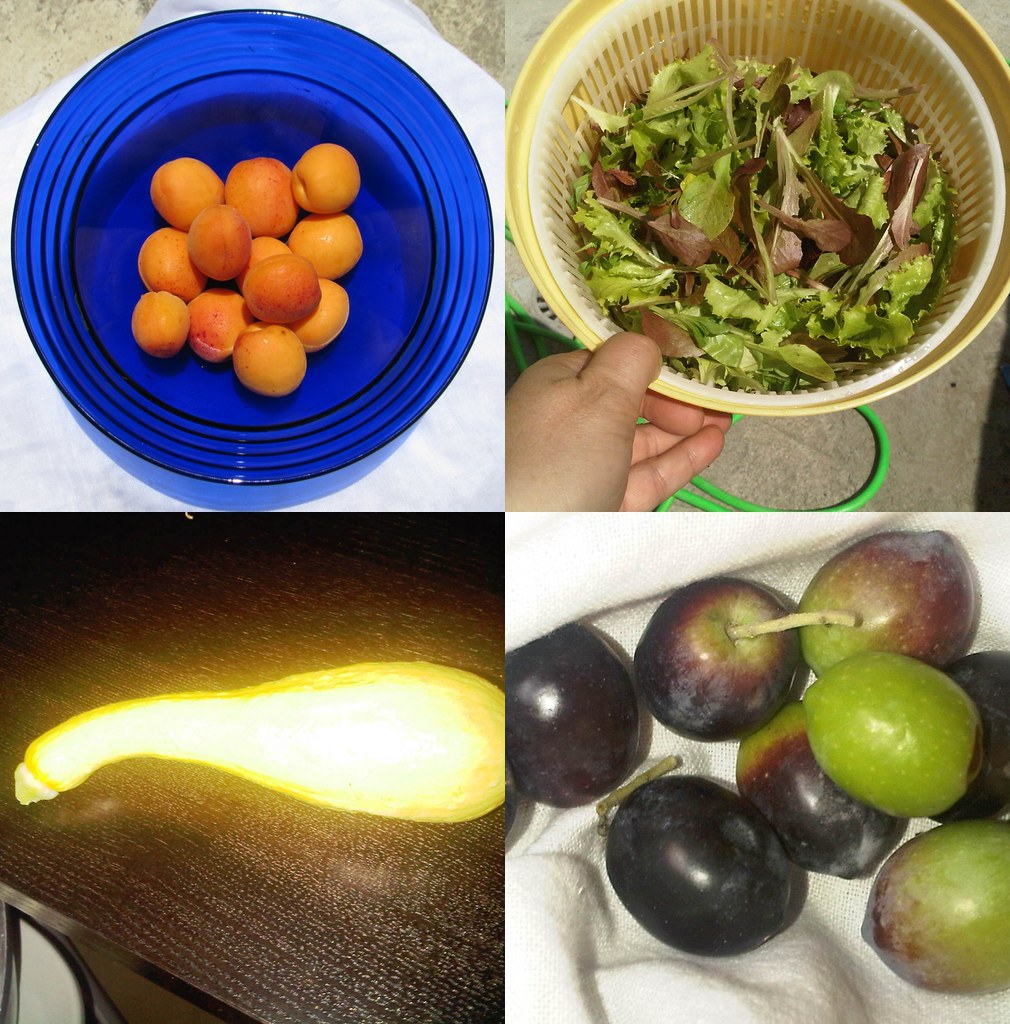
apricots, all 12 of them; a handful of olives, the lone crookneck squash, and salads, of which there were many – there were tomatoes too, but i missed getting a photo.
next post – the continuing saga…


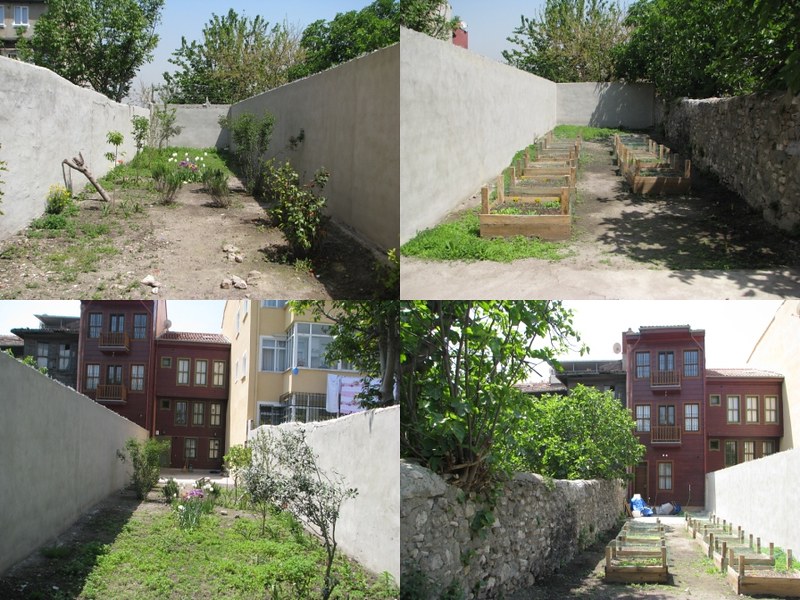
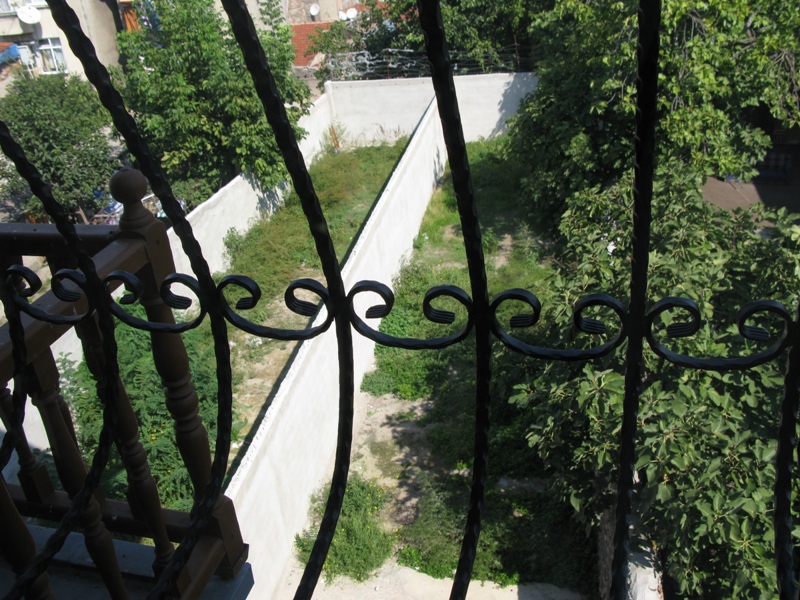
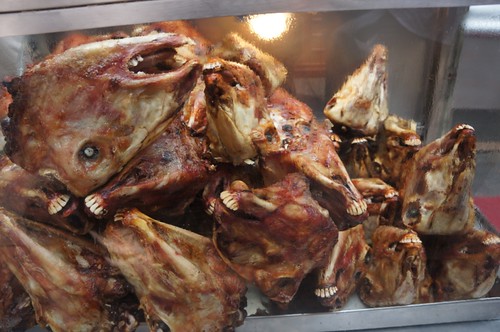
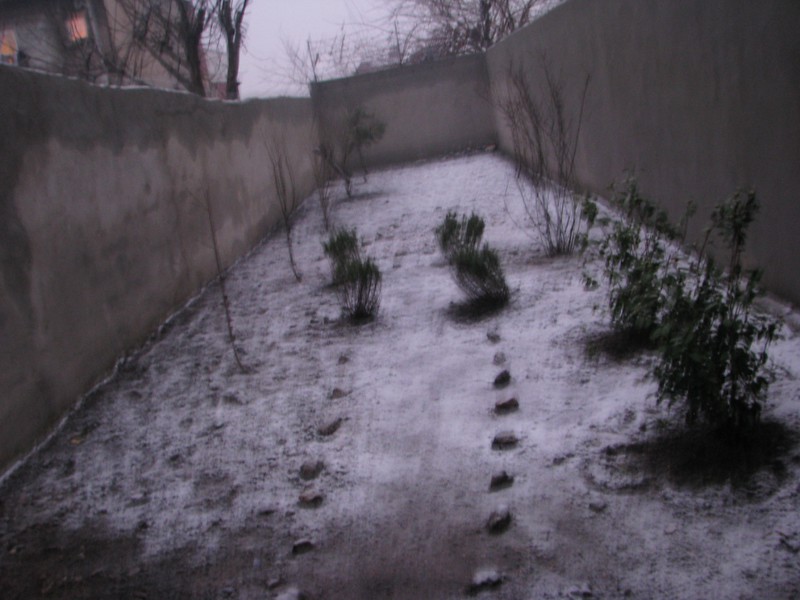
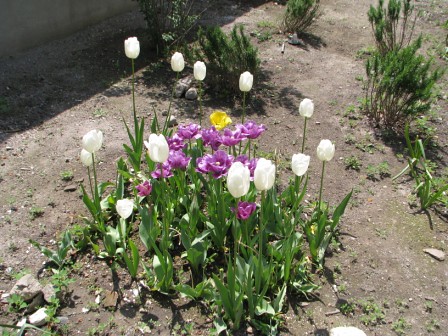
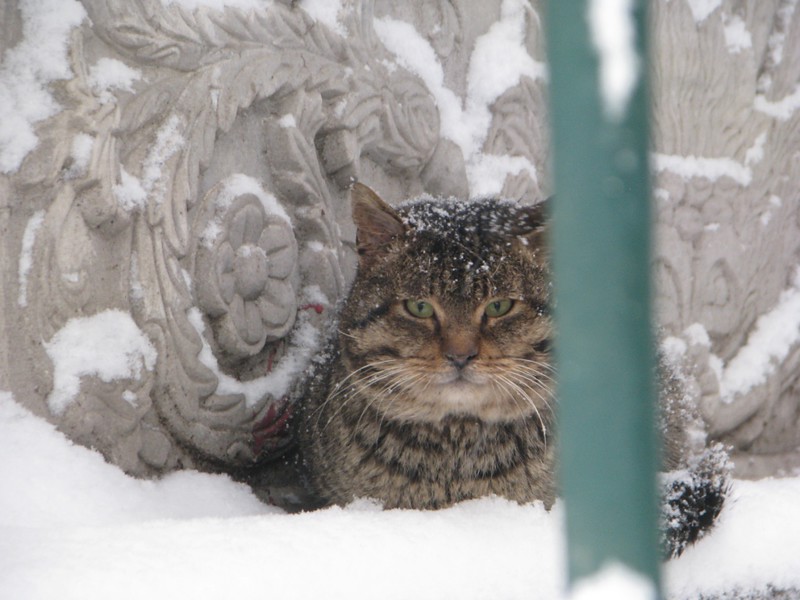
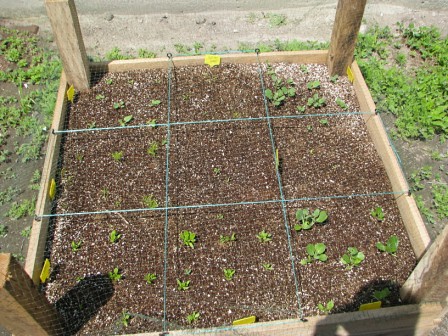


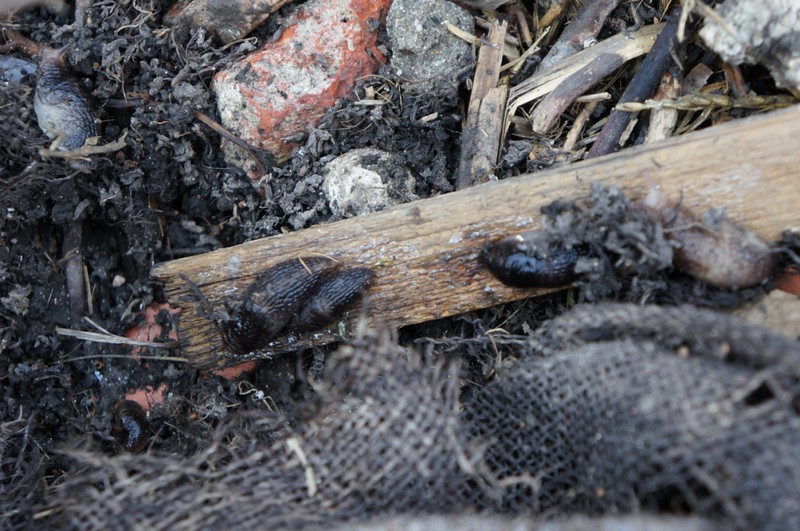
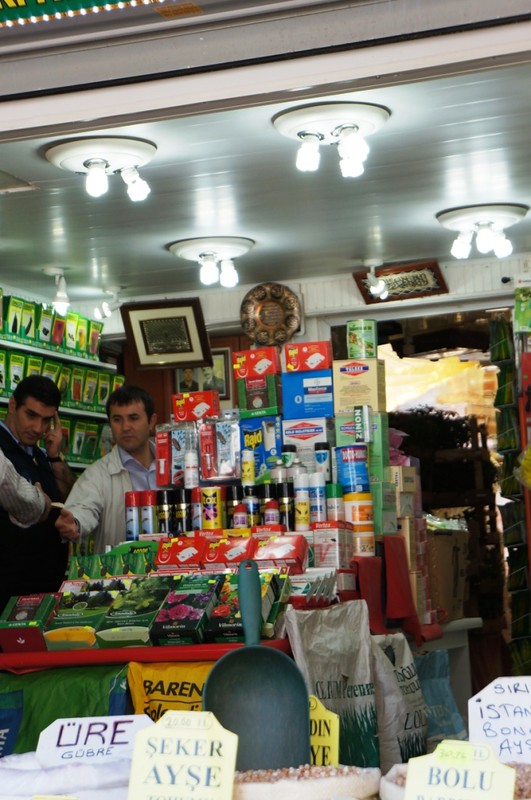
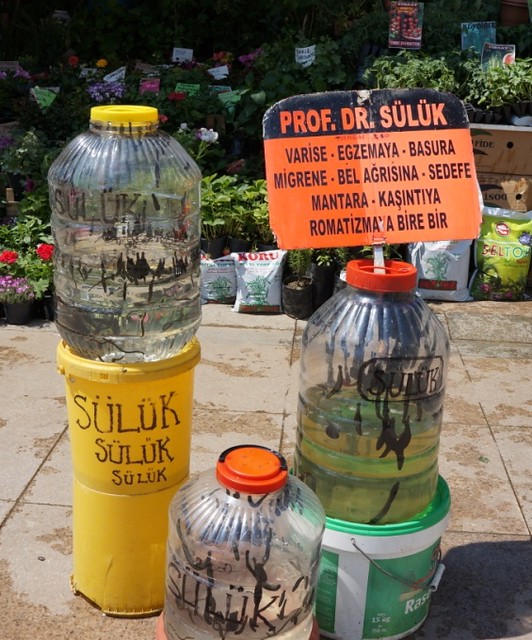
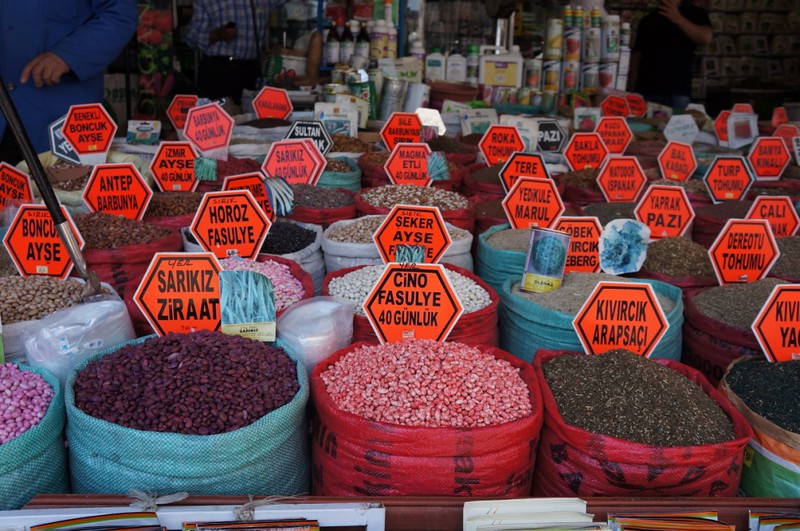
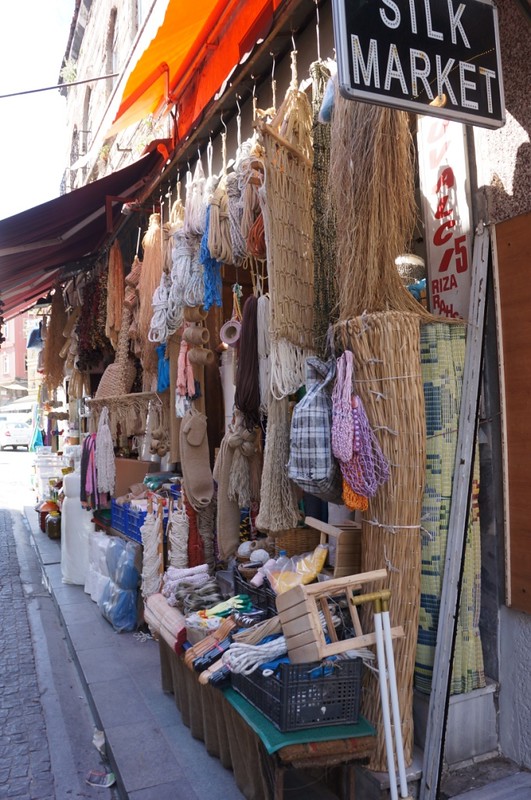
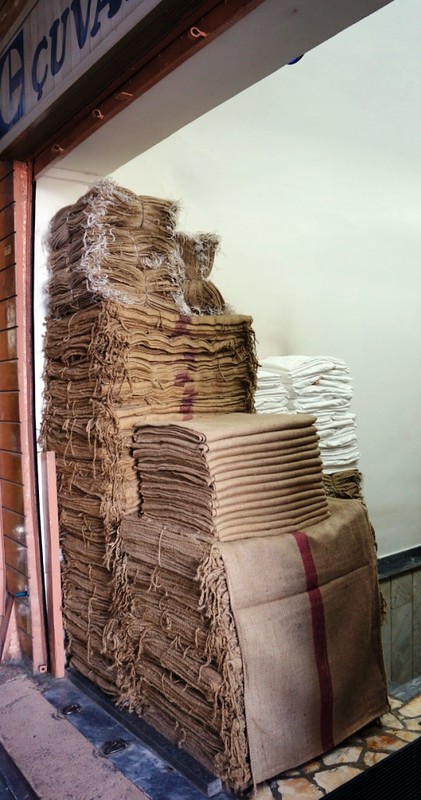
Dear Catherin
Kunderke recommended that I contact you. I will be going to Konya for the Seb-I-Aruz at the end of the year and will be in Istanbul from 26 to 31st December. She suggested that I stay at your beautiful and soulful place – even if it is only for one night. Please can you contact me.
So much appreciated and kind regards Fran. Ps how I love your site!!!
fran, thanks for writing. glad you liked the site! i will reply to you privately regarding your visit to turkey.